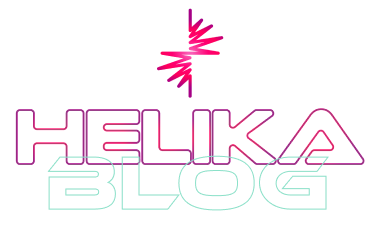End-to-End Marketing Attribution with Helika
In the wild world of web3 gaming, where companies compete for players’ attention 24/7 with NFT mints, airdrops, influencer campaigns, and playtests, teams need to utilize a broad set of marketing channels and campaigns to acquire players, holders, and supporters.
The biggest challenge: Onchain actions.
Now, users have a larger action surface for interacting with games, like buying and selling NFTs, staking, providing liquidity for tokens, and more. Existing products don’t support on-chain events and can’t map on-chain to off-chain data, which is needed for complete attribution.
That adds more complexity to the already messy user journey, with consumers constantly switching between different stages (exploration and evaluation) and channels. In this intricate landscape, understanding and optimizing for the Golden Cohort become paramount for sustained success.
“Messy Middle” (Google, 2020)
Attribution brings light to the complex web of user acquisition and behavior. It consolidates all the data points across channels and stages to identify where users come from and their actions. This allows teams to determine who their highest-value players are and through which campaigns they can be effectively acquired. As a result, your game can optimize ad spend towards the highest-value target groups — Golden Cohort.
“Half the money I spend on advertising is waste, and the problem is I do not know which half.” – Henry Ford
Attribution fixes this.
Attribution 101
What’s marketing attribution
Attribution tracks the customer journey and behavior outside and inside the game to link conversions and user actions to touch points. A touch point is essentially a specific campaign (e.g. early access campaign) done through a channel (e.g. content creator A) that is part of a source (e.g. Twitter). User actions can be tracked at a deep level, such as a player reaching a certain level, buying an IAP, or taking part in a liveops event.
For web3 games, mapping off-chain to on-chain data becomes key as user actions occur across these two spheres. For instance, a user might buy and stake an NFT. The user also may buy a token as well. Tracking these on-chain actions has been very difficult with Web2 attribution tools.
As mentioned above, users tend to engage with multiple touchpoints. Attribution allows us to track all interactions and assign a weight to each touch point. This shows us the role of the touch point in the user journey and how much of the total conversion value it’s responsible for.
How to set up attribution
-
- Determine your KPIs. Typical metrics game studios track range from ad impressions to clicks, installs, sessions per day, session length, revenue, and more.
- Audit your existing marketing efforts to identify all channels and campaigns. This helps to create a naming convention for your tracking links.
- Select attribution tools based on your requirements regarding KPIs and channels, as identified in steps 1 and 2.
- Define your attribution logic: How are touch points weighted? Helika currently supports last click attribution
- Implement tracking tags, set up custom tracking events (e.g. player finished tutorial), and create tracking links
- Monitor and test
Web3 Attribution
Web3 gaming adds new player archetypes and ways for users to interact with games. The Customer Lifetime Value (CLV) of a player is no longer just determined by how much they spent on IAPs or how many ads they watch. Web3 adds a whole new ecosystem around the game that drives revenues. For example, someone might only sporadically play the game but likes to buy and stake NFTs. These are all actions that can be traced.
On-chain data allows us to capture deeper insights about players. On the other hand, it requires teams to analyze more metrics, more platforms, and more potential actions a user can take. Did this campaign bring me more players and/or NFT holders? How good do they retain? Where did they buy the NFT and did they pay royalties? For this, platforms like Helika are needed that combine on-chain and off-chain data.
How to Use Attribution to Generate Insights
Measure the marketing funnel
Identify which sources users come from and determine which specific campaigns work well in bringing in valuable players.
See where players churn to optimize your efforts. For example, if a large percentage of players don’t finish the tutorial, you may want to allocate resources to streamline the FTUE (first-time user experience).
Monitor and optimize performance
By attributing sales conversions to touchpoints, you can identify ROAS (return on ad spend) per campaign and better allocate your marketing budget. ROAS is measured by the CLV divided by the Customer Acquistion Costs (CAC).
Moreover, you can use the data collected throughout the user journey, for example, which campaign a user came from or whether they are interested in NFTs, to personalize the customer experience and increase Customer Lifetime Value. Teams can also identify ‘golden cohorts’ based on player behavior. For instance, players that spend 5 hours in the first 7 days may show higher CLV. Thanks to deep funnel attribution, it’s also possible to determine through which channels and campaigns users belonging to the ‘golden cohort’ can be acquired most effectively.
Also, keep an eye on whether channels complement or compete with each other. If the traffic in one channel always decreases when the volume in another rises and vice versa, that’s a sign of cannibalization.
Conclusion
Attribution is essential to every game’s user acquisition efforts, allowing teams to measure performance, determine effective channels and campaigns, and identify hurdles within the user journey.
Web3 games face a new challenge: Combining on-chain and off-chain data. Helika’s SDK, focusing on the Golden Cohort, provides in-game analytics and a deep funnel attribution for web3 games out of the box, supporting attribution across browsers, mobile devices, and PC launchers like Epic and Steam. The SDK is compatible with Unity and Unreal Engine (soon).





